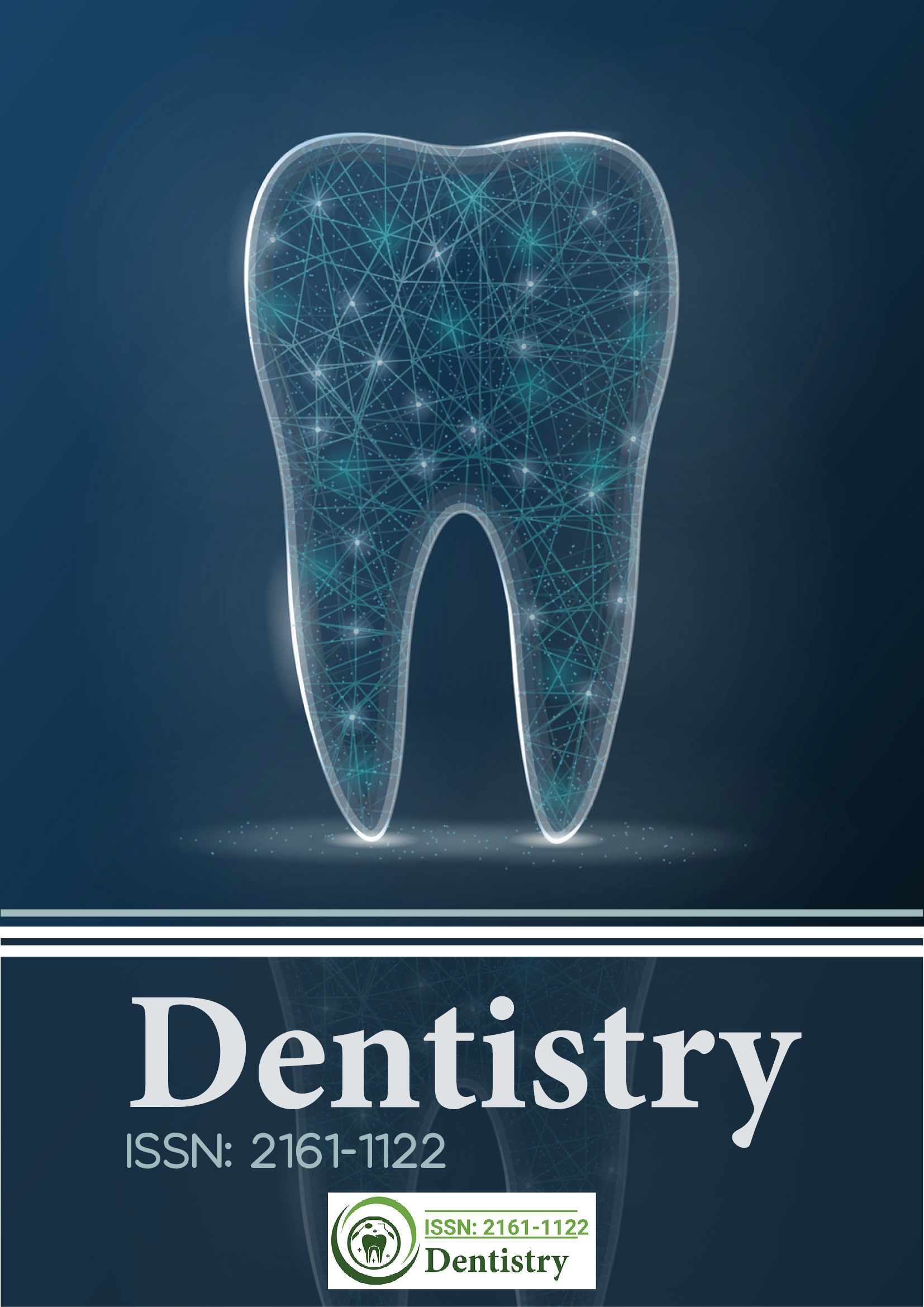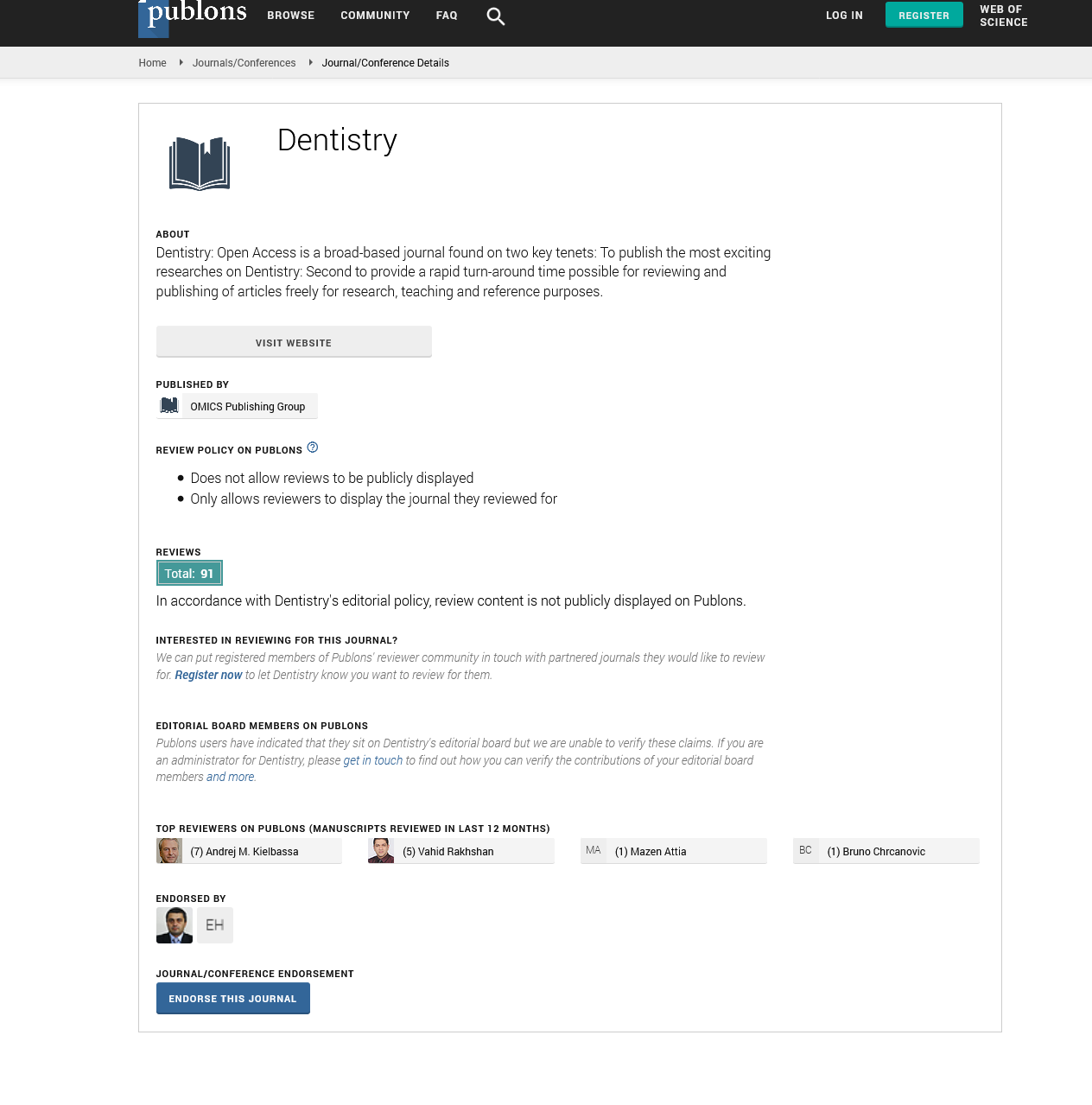Citations : 2345
Dentistry received 2345 citations as per Google Scholar report
Indexed In
- Genamics JournalSeek
- JournalTOCs
- CiteFactor
- Ulrich's Periodicals Directory
- RefSeek
- Hamdard University
- EBSCO A-Z
- Directory of Abstract Indexing for Journals
- OCLC- WorldCat
- Publons
- Geneva Foundation for Medical Education and Research
- Euro Pub
- Google Scholar
Useful Links
Share This Page
Journal Flyer

Open Access Journals
- Agri and Aquaculture
- Biochemistry
- Bioinformatics & Systems Biology
- Business & Management
- Chemistry
- Clinical Sciences
- Engineering
- Food & Nutrition
- General Science
- Genetics & Molecular Biology
- Immunology & Microbiology
- Medical Sciences
- Neuroscience & Psychology
- Nursing & Health Care
- Pharmaceutical Sciences
Commentary - (2025) Volume 15, Issue 3
The 360-Degree Continuous Mattress Suture
Ernesto Bruschi*Received: 28-Jun-2023, Manuscript No. DCR-23-21918; Editor assigned: 30-Jun-2023, Pre QC No. DCR-23-21918 (PQ); Reviewed: 14-Jul-2023, QC No. DCR-23-21918; Revised: 05-Apr-2025, Manuscript No. DCR-23-21918 (R); Published: 12-Apr-2025
About the Study
The scientific evidence suggests that a minimum width of 2 mm of keratinized mucosa must be present to reduce the incidence of peri-implant disease significantly. The above concept is confirmed by the expert panels of the American academy of periodontology end of the osteology foundation [1,2]. These groups of periodontists, oral and maxillofacial surgeons, agree that in the surgical phase, all procedures must ensure the augmentation of the band of keratinized tissue when this is insufficient. Therefore, augmentative procedures are often necessary, including connective tissue grafts, plastic surgery, and dermal matrices. In addition, these expert panels also conclude that if the keratinized tissue band is narrower than 2 mm, even at healed sites, surgical augmentative procedures must always be a recommended treatment option.
It is essential to underline that it is not only the width of the keratinized mucosa that affects implant health but also its vertical thickness [3]. The two aspects are sometimes confused. Although closely related, the surgeon must consider both factors separately during implant procedure planning. Regarding the vertical thickness of the mucosa, an insufficient dimension can usually be compensated by submerging the implant below bone level or by placing a graft. But, the surgeon must always consider the thickness of the soft tissues.
We recently introduced a new suturing method ideal for regenerative implant procedures. The technique is called the 360-degree continuous mattress suture (hereafter abbreviated to 360 CMS) [4].
The 360 CMS is a reliable suturing system for dental implant regenerative procedures that favors uneventful soft tissue healing. The technique is ideal for second-intention healing. The central part of the wound can remain to some extent unclosed while, at the same time, the 360 CMS warrants firmness and stability of any underlying auto graft or xenograft. In grafting, stability is always essential, but, at the same time, excess compression and tension are harmful. The 360 CMS, in combination with small gauge monofilament elastic sutures such as those suggested by the authors (6/0 synthetic absorbable glyconate monofilament-Monosyn B. Braun, B. Braun Melsungen AG, Germany), easily avoids any excess and potentially harmful tension on the wound margins.
The type of suture is essential to this technique. Any suture that can create inflammation, such as silk, must be avoided in all these surgical procedures. And this is generally true. Using only sutures that prevent surgical site inflammation is essential in this technique. Also, the suture must be an elastic monofilament. The indicated suture material is ideal. A potential alternative suture material is PTFE. Unfortunately, it is not absorbable, and this is potentially a downside.
The suturing technique starts with a bucco-distal anchoring knot that is maintained loose. It then engages the margin of the flap and goes lingually or palatally under the opposite mucosal margin to re-enter mesially with a mattress loop. It now continues to engage the bucco-mesial margin of the flap and the undetached keratinized tissue. The free end of the initial knot and needle end create a mesial anchoring loop. At this point, the surgeon checks the continuous suture for ideal tension and regulates it by sliding the sections of the suture within the tissue until it is just perfect. Finally, the surgeon finalizes the suture with a buccal stabilizing knot.
The 360 CMS is a promising technique for dental implant regenerative procedures. We use it routinely in implant surgery for laterally-positioned flaps, roll flaps, connective tissue grafting on implant sites, dermal matrix grafting, and split-crest procedures. We also use it frequently in post-extractive grafting methods. Combined with a membrane, it effectively stabilizes the membrane and any underlying grafts.
The technique allows for both primary wound closure (firstintention healing). But, it is also an excellent way to stabilize the wound and any grafts in second-intention healing.
References
- Tavelli L, Barootchi S, Avila-Ortiz G, Urban IA, Giannobile WV, Wang HL. Peri-implant soft tissue phenotype modification and its impact on peri-implant health: A systematic review and network meta-analysis. J Periodontol. 2021;92(1):21-44.
[Crossref] [Google Scholar] [PubMed]
- Sanz M, Schwarz F, Herrera D. Importance of keratinized mucosa around dental implants: Consensus report of group 1 of the DGI/SEPA/Osteology Workshop. Clin Oral Implants Res. 2022;23:47-55.
[Crossref] [Google Scholar] [PubMed]
- Linkevicius T, Apse P, Grybauskas S, Puisys A. The influence of soft tissue thickness on crestal bone changes around implants: A 1-year prospective controlled clinical trial. Int J Oral Maxillofac Implants. 2009;24(4):712-719.
[Google Scholar] [PubMed]
- Bruschi E, Granata S, Agrestini M. The 360-degree continuous mattress suture in dental implant surgery: A case series. Oral Maxillofac Surg Cases. 2023;9(2).
Citation: Bruschi E (2025) The 360-Degree Continuous Mattress Suture. J Dentistry. 15:724.
Copyright: © 2025 Bruschi E. This is an open access article distributed under the terms of the Creative Commons Attribution License, which permits unrestricted use, distribution, and reproduction in any medium, provided the original author and source are credited.

